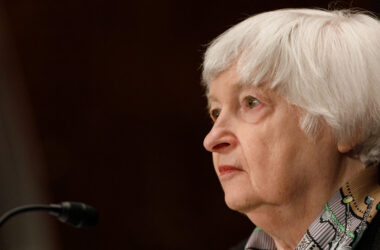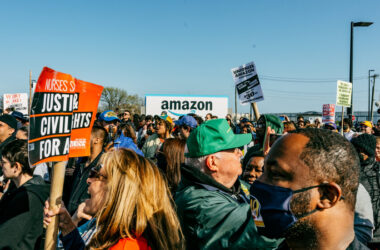Many of the issues likely to dominate Thursday’s televised debate between President Biden and former President Donald J. Trump boil down to economics.
Inflation, immigration, government taxing and spending, interest rates, and trade relationships could all take center stage — and both candidates could make sweeping claims about them, as they regularly do at campaign events and other public appearances.
Given that, it could be handy to go into the event with an understanding of where the economic data stand now and what the latest research says. Below is a rundown of some of today’s hot-button topics and the context you need to follow along like a pro.
Inflation has been high, but it’s slowing.
Inflation jumped during the pandemic and its aftermath for a few reasons. The government had pumped more than $5 trillion into the economy in response to Covid, first under Mr. Trump and then under Mr. Biden.
As families received stimulus checks and built up savings amid pandemic lockdowns, they began to spend their money on goods like cars and home gym equipment. That burst of demand for physical products collided with factory shutdowns around the world and snarls in shipping routes.
Shortages for everything from furniture parts and bicycles to computer chips for cars began to crop up, and prices started to jump in 2021 as a lot of money chased too few goods.
Then Russia invaded Ukraine in early 2022, and the geopolitical problems pushed gas and food prices up sharply. Beyond that, the costs of some key services — notably rent — had begun climbing quickly. Consumer Price Index inflation peaked at 9.1 percent in the summer of 2022, fueled by a combination of policy and plain bad luck.
The Federal Reserve reacted haltingly at first — too slowly, its own officials say in hindsight. But policymakers began to raise interest rates in early 2022, lifting them to the highest level in more than two decades over just 16 months. They have left them at that elevated rate of 5.3 percent ever since.
Inflation is now slowing. It came in at 3.3 percent in the latest reading, faster than the roughly 2 percent that was normal before the pandemic but much slower than its peak.
That simply means that prices are not rising as quickly — not that they are broadly coming down. While some retailers have been cutting prices to lure consumers, prices for groceries, housing and other necessities are much higher than a few years ago.
The economy has been surprisingly strong.
As America faced a burst of rapid inflation — one that was quickly felt across other advanced economies around the world — it also experienced solid economic growth.
Consumers have continued to spend, though that has slowed somewhat recently. The stock market is on a tear as innovations like artificial intelligence stoke optimism among investors. Unemployment has been at or below 4 percent since late 2021, the longest stretch of such low unemployment since the 1960s, and wage growth has been robust.
Hiring has remained well above the levels that were normal in the decade leading up to the pandemic, surprising forecasters month after month.
Immigration has boosted the labor market, though with growing pains.
Part of the reason that employers have been able to hire so much? Immigration. After slowing sharply at the onset of the pandemic, legal immigration has bounced back. Undocumented immigration and the inflow of refugees have also surged around the world in recent years, including in the United States.
Goldman Sachs economists estimate that two million people could immigrate into the country on net this year, twice the typical rate. The influx is taxing housing and human resources in some cities, stoking backlash among voters.
Mr. Trump has been promising to choke off immigration across the southern border and to pursue large deportations. Goldman Sachs analysts pointed out that court challenges could limit his curbs on migration, and estimated that immigrant inflows could slow to anywhere from very low — approaching zero temporarily — to about 1.5 million people per year under his watch, depending on which policies took effect.
While high levels of immigration have generated pushback, they have also offered notable economic benefits. Immigration has been providing a source of would-be workers to employers who are hungry to hire, boosting economic growth and even helping the nation with its debt load.
If policy does not change and the number of people coming into the United States slows only gradually, the Congressional Budget Office estimates that the extra migration will reduce the deficit by nearly $900 billion over the next decade.
If immigration suddenly halted or reversed, economists said, that could cause painful labor shortfalls and shortages in key industries — pushing up prices. Any deficit benefit would also be less pronounced.
The deficit has exploded, and with it the national debt.
Help with deficit reduction would come at a welcome moment: The budget deficit in 2024 is projected to be $1.9 trillion, the Congressional Budget Office recently estimated, up from a forecast of $1.6 trillion earlier this year. Over the next 10 years, the annual deficit is projected to swell to $2.9 trillion.
That is rapidly adding to the national debt pile, with little end in sight. Both Mr. Trump’s and Mr. Biden’s administrations notably swelled the deficit and debt, even excluding pandemic relief.
Shrinking the nation’s debt pile could prove difficult in the years ahead, in part because America is paying more in interest costs on its borrowing. After years of rock-bottom rates in the 2010s and then again in 2020, rates seem poised to remain higher for longer now.
Interest rates are also high, but politicians have little control over that.
The Fed, America’s nation’s central bank and the institution that sets interest rates, went into 2024 expecting to cut borrowing costs several times. But officials have dialed those forecasts back as inflation has proved more stubborn than expected.
Investors still expect that central bankers will lower rates in September as inflation comes down and as officials try to avoid tipping the economy into recession. But policymakers themselves forecast this month that rates would stay above 3 percent through 2026, and that even in the longer run they would remain higher than they were at any point in the 2010s.
High rates are also painful for shoppers, who see them as another cost on their resources as they pay more for car loans, mortgages and credit card debt. In fact, the jump in borrowing costs does a lot to explain why consumers are so glum even as inflation cools, recent research suggests.
The catch, from a political standpoint, is that the White House has no direct control over rates.
The president gets to pick a Fed chair, but that person needs to be confirmed by the Senate, making it hard to select a loyalist who will do the White House’s bidding. Once the chair is confirmed, the administration has little control over him or her — it is not even clear that a president can fire or successfully demote a Fed chair, an idea Mr. Trump flirted with but ultimately abandoned during his administration.
Both parties are embracing tariffs, but at some cost.
Trade policy is almost certain to come up during the debate. Mr. Trump slapped tariffs on trading partners — notably China — while in office, and he has been pledging even more drastic ones if elected again. Mr. Biden himself announced a sharp increase in tariffs last month on a more targeted range of Chinese imports, including electric vehicles, solar cells, semiconductors and advanced batteries.
Such policies are not just economic but often geopolitical. The goal has been to foster U.S. manufacturing in sensitive industries, or in some cases to secure more resilient supply chains.
But part of the point has also been to bring manufacturing jobs back to the United States. Economic research has suggested that Mr. Trump’s tariffs have done little to bring jobs back so far, but that they were often a political success despite that.
Tariffs are not a cost-less policy: They are often passed along, at least in part, to shoppers. Research has suggested that U.S. importers and consumers largely bore the brunt of Mr. Trump’s tariffs.




